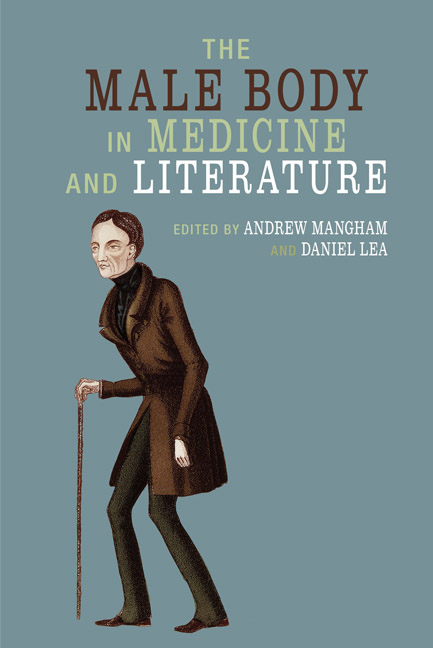Book contents
- Frontmatter
- Contents
- Acknowledgements
- Notes on Contributors
- Introduction
- Part One Enquiry and Experimentation
- Part Two Wounded and Psychopathologised Bodies
- 5 The Male Wound in Fin de Siècle Poetry
- 6 The Cacophony of Disaster: The Metaphorical Body of Sound in Don DeLillo's Falling Man
- 7 ‘Human Nature is Remorseless’: Masculinity, Medical Science and Nervous Conditions in Virginia Woolf's Mrs Dalloway
- 8 ‘A man must make himself’: Hypochondria in Maria Edgeworth's Ennui
- Part Three Fear, Confusion and Contagion
- Index
5 - The Male Wound in Fin de Siècle Poetry
from Part Two - Wounded and Psychopathologised Bodies
- Frontmatter
- Contents
- Acknowledgements
- Notes on Contributors
- Introduction
- Part One Enquiry and Experimentation
- Part Two Wounded and Psychopathologised Bodies
- 5 The Male Wound in Fin de Siècle Poetry
- 6 The Cacophony of Disaster: The Metaphorical Body of Sound in Don DeLillo's Falling Man
- 7 ‘Human Nature is Remorseless’: Masculinity, Medical Science and Nervous Conditions in Virginia Woolf's Mrs Dalloway
- 8 ‘A man must make himself’: Hypochondria in Maria Edgeworth's Ennui
- Part Three Fear, Confusion and Contagion
- Index
Summary
Few religious figures evoke as many decadent and homoerotic connotations as Saint Sebastian, the beautiful male martyr shot full of arrows by Roman soldiers for confessing his Christian faith. Depicted in countless Renaissance paintings – most notably by Guido Reni, who painted the subject seven times – he is generally portrayed as a swooning yet defiant youth, his lithe and muscular body pierced by arrows. Sebastian continues to have significance as a contemporary gay icon. From Derek Jarman's film Sebastiane (1976) to male model Sebastien Moura on the cover of gay lifestyle magazine reFRESH (June/July 2007), Sebastian endures as the go-to saint for the homoerotic imaginary: ‘Refusing to take his place with the obsolete icons of earlier epochs, he has enhanced his position as the single most successfully deployed image of modern male gay identity.’ To a lesser extent, Jesus Christ himself is also recognised as a ‘gay icon’. Gregory Woods notes that there is a ‘great body of devotional poetry, most of it written by men, which is identical in its conventions to secular love poetry, and differs from it only in the name of the beloved: Jesus Christ’. Ruth Vanita associates Christ with ‘perpetual virginity’ and ‘same-sex community’, arguing that this made him an inspiring ‘imaginary ancestor’ for homoerotically inclined Victorians of both sexes.
Admiration for both of these figures grew in intensity during the latter half of the nineteenth century as a significant body of writers drew on Biblical imagery in their decadent poems. Saint Sebastian and Christ appear frequently in the work of ‘Uranian’ writers such as Lord Alfred Douglas, Oscar Wilde, John Gray, André Raffalovich and Baron Corvo (Frederick Rolfe). In this essay, I aim to examine why these figures appealed to late nineteenth-century writers by focusing on the male body and the symbolism of the wound. The wound – whether Jesus’ stigmata or Sebastian's punctured flesh – becomes the locus for a number of oscillating desires expressed in fin-de-siècle writing, including male and female homoerotic desire and identification with the figure of the martyr. In fin-de-siècle poetry in particular, the wound is fetishised, symbolising an orifice into which the poet inserts their own desires. Before embarking on these readings, however, it is necessary to outline fin-de-siècle anxieties surrounding the male body – anxieties that were epitomised in the iconography of the male wound.
- Type
- Chapter
- Information
- The Male Body in Medicine and Literature , pp. 87 - 102Publisher: Liverpool University PressPrint publication year: 2018



